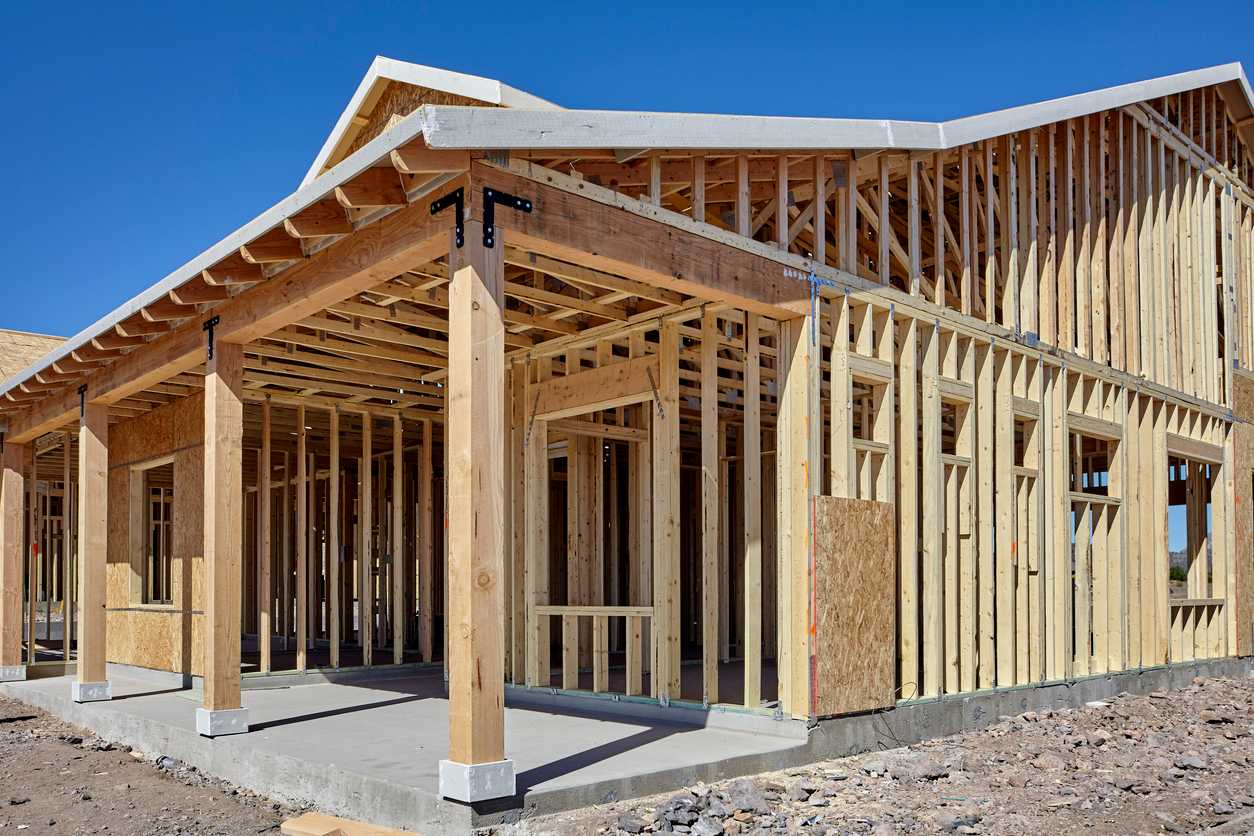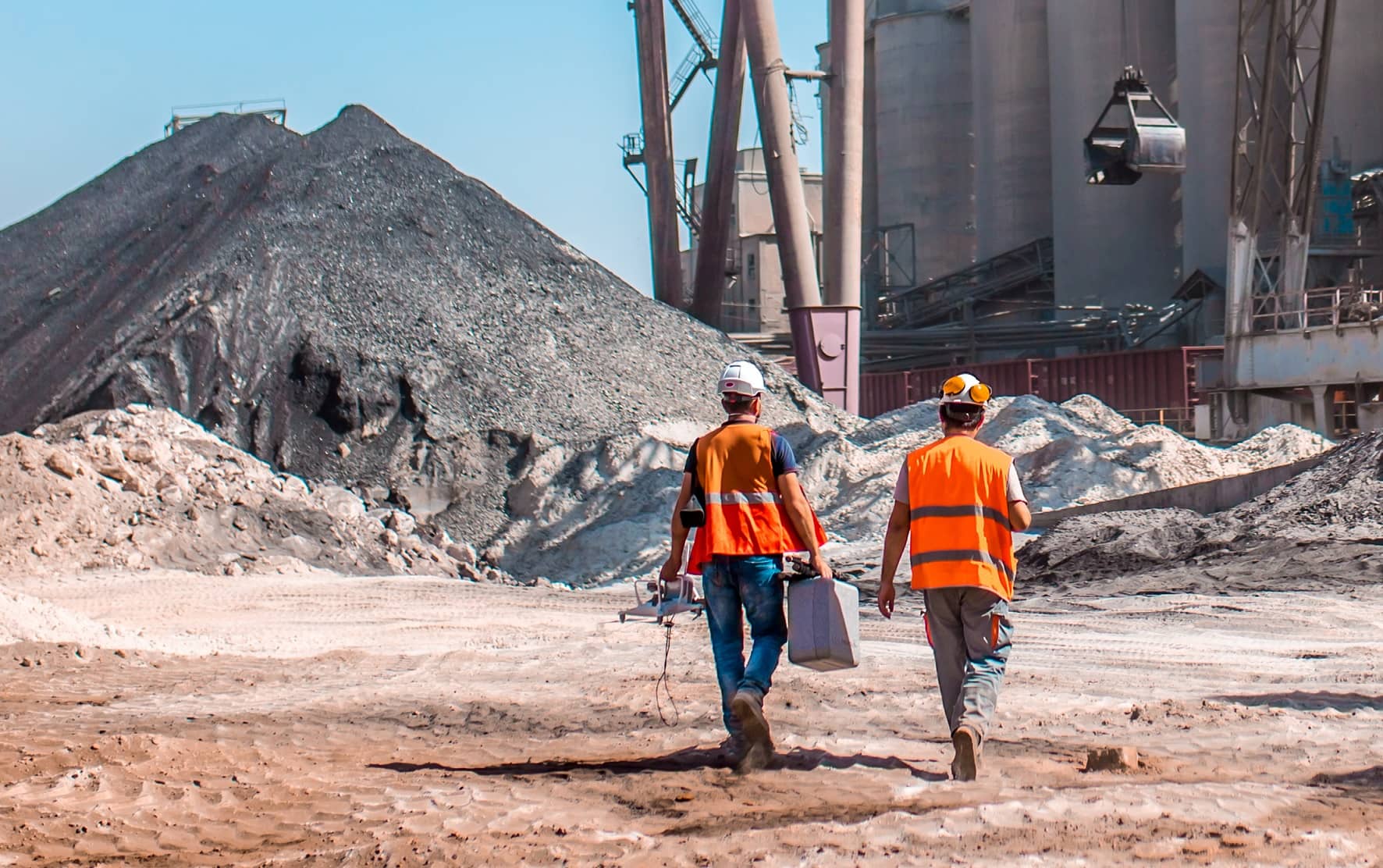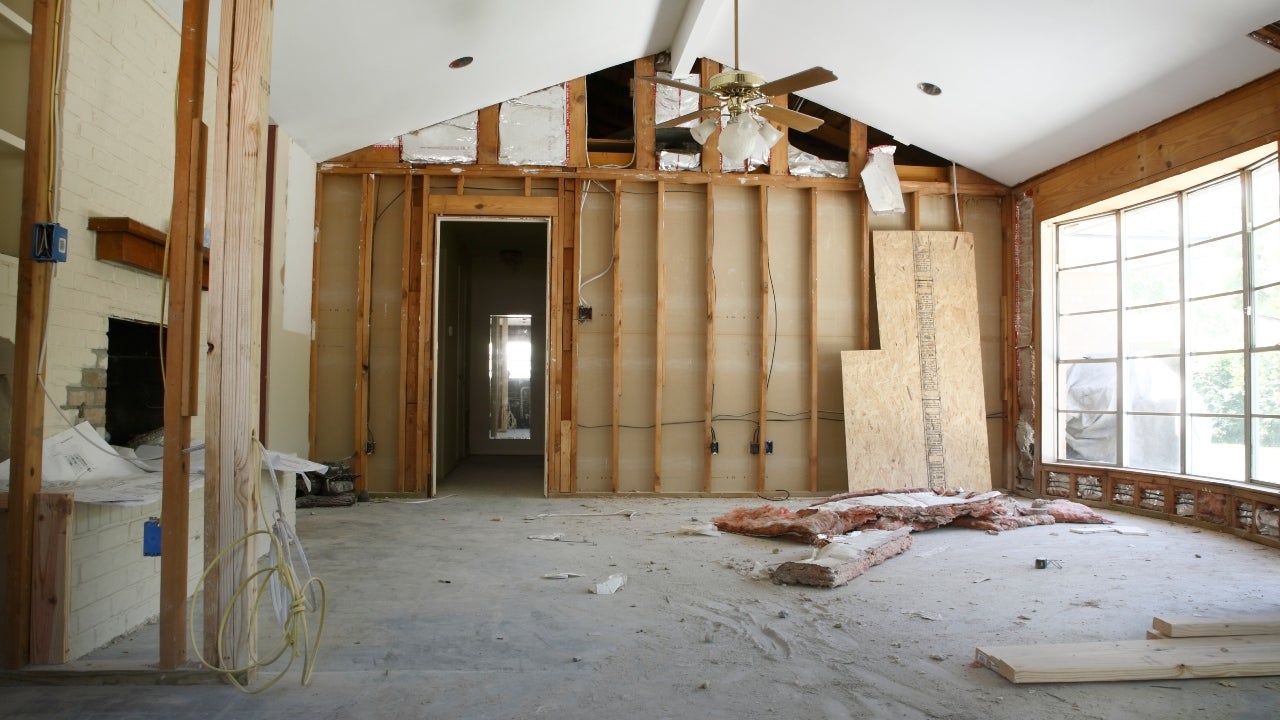Home>diy>Building & Construction>Who Is Eligible For A USDA Construction Loan


Building & Construction
Who Is Eligible For A USDA Construction Loan
Modified: January 3, 2024
Discover who is eligible for a USDA construction loan and start building your dream home. Explore the options and benefits of this financing solution.
(Many of the links in this article redirect to a specific reviewed product. Your purchase of these products through affiliate links helps to generate commission for Storables.com, at no extra cost. Learn more)
Introduction
Are you considering building your dream home in a rural area? If so, you may be eligible for a USDA construction loan. USDA construction loans are a specialized type of loan offered by the United States Department of Agriculture (USDA) that can help finance the construction of a new home in eligible rural areas.
Unlike traditional home construction loans, USDA construction loans offer several unique benefits, including low-interest rates, no down payment requirements, and flexible credit and income requirements. These loans are specifically designed to promote homeownership in rural areas and stimulate economic growth in those communities.
In this article, we will explore the eligibility requirements for USDA construction loans, including income requirements, credit score requirements, property requirements, and construction requirements. Understanding these criteria can help you determine if you qualify for this type of loan and make your dream home a reality.
Key Takeaways:
- USDA construction loans offer low-interest rates, no down payment requirements, and flexible credit and income guidelines, making them an attractive option for building homes in eligible rural areas.
- Eligibility for USDA construction loans is determined by income limits, credit score requirements, property location criteria, and adherence to construction guidelines, emphasizing the importance of working with an experienced lender.
Read more: What Is A USDA Construction Loan
What are USDA construction loans?
USDA construction loans are loans offered by the USDA to individuals or families who wish to build a new home in eligible rural areas. These loans provide financing specifically for the construction phase of a home, rather than the purchase of an already-built property.
One of the key benefits of USDA construction loans is that they offer favorable terms and conditions, such as low-interest rates and no down payment requirements. This makes them an attractive option for individuals or families who may not have significant savings for a down payment or who prefer to use their funds for other purposes related to their new home.
USDA construction loans are available through the USDA Rural Development Guaranteed Housing Loan Program. This program aims to promote homeownership in rural areas by making affordable financing options accessible to eligible borrowers.
It’s important to note that USDA construction loans are not directly provided by the USDA. Instead, they are offered through approved lenders, such as banks and mortgage companies, who partner with the USDA to provide financing to eligible individuals or families.
These loans typically have a construction-to-permanent financing structure, meaning that the loan covers both the construction phase and the permanent mortgage once the construction is complete. This eliminates the need for borrowers to secure two separate loans or incur extra fees and closing costs.
Overall, USDA construction loans are a valuable financing option for individuals or families looking to build their dream home in rural areas. They offer attractive terms, favorable loan structures, and help stimulate economic growth in rural communities.
Eligibility requirements for USDA construction loans
To be eligible for a USDA construction loan, you must meet certain requirements set by the USDA. These requirements assess your income, credit score, property location, and construction plans. Let’s explore each of these criteria in detail:
Income requirements:
The USDA has income eligibility limits based on the area’s median income. The specific income limits vary by location and household size. To qualify, your household income must fall within the designated limits. Keep in mind that the income requirements consider the income of all adults in the household who will be living in the new home.
Credit score requirements:
While USDA construction loans are more flexible when it comes to credit scores compared to traditional mortgages, lenders typically require a minimum credit score of around 640. However, some lenders may have slightly different requirements, and a higher credit score will increase your chances of approval and potentially secure a more favorable interest rate.
Read more: How To Apply For A USDA Construction Loan
Property requirements:
The property you plan to build on must meet the USDA’s definition of rural, which generally includes areas with a population of fewer than 35,000 residents. It’s important to note that not all rural areas qualify, so it’s best to check the USDA’s website or consult with an approved lender to determine if your desired location is eligible.
Construction requirements:
The construction plans for your new home must meet certain specifications outlined by the USDA. This includes adhering to local building codes, obtaining the necessary permits, and using contractors who are licensed and insured. The USDA may also require specific inspections throughout the construction process to ensure compliance with their guidelines.
Additionally, the USDA construction loan program has specific requirements for the type of home that can be financed. Typically, only modest, single-family dwellings are eligible for funding through this program. Luxury homes or homes deemed too large or extravagant may not meet the criteria for a USDA construction loan.
It’s important to remember that each lender may have its own additional requirements and guidelines. Working with an approved lender who has experience with USDA construction loans can help ensure you understand and meet all eligibility criteria.
By meeting the eligibility requirements for a USDA construction loan, you can secure financing to build your dream home in an eligible rural area and enjoy the benefits of affordable homeownership.
Income requirements
When applying for a USDA construction loan, one of the key eligibility criteria is meeting the income requirements set by the USDA. These income requirements ensure that the loan is accessible to individuals and families who fall within certain income brackets. The specific income limits vary based on the area’s median income and household size.
The USDA uses two ratios to determine income eligibility:
- Gross Monthly Income: This includes all income earned by adults in the household, such as wages, salaries, self-employment income, retirement benefits, and child support.
- Total Debt-to-Income Ratio (DTI): This measures the borrower’s ability to repay the loan by comparing their monthly debt obligations to their monthly income. The USDA emphasizes a maximum DTI of 41%, which means that your total monthly debt payments (including the estimated mortgage payment) should not exceed 41% of your gross monthly income.
To determine your eligibility, you can refer to the USDA Income Eligibility Calculator available on the USDA’s website. This tool helps you estimate your income eligibility based on your location, household size, and income information. Additionally, you can consult with an approved lender who can provide personalized guidance based on your financial situation.
It’s important to note that income requirements may vary depending on whether you’re considered a low-income or moderate-income borrower. Those with lower incomes typically have more flexibility in meeting the requirements, while those with higher incomes may need to demonstrate their ability to repay the loan.
If your income exceeds the USDA’s income limits, you may want to consider alternative loan options or explore other financing avenues. However, it’s important to note that the USDA construction loan program offers attractive terms and benefits, such as low-interest rates and no down payment requirements, which are not typically available with conventional loans.
Remember, meeting the income requirements is just one part of the qualification process for a USDA construction loan. Other factors, such as credit score, property location, and construction plans, will also be considered. Working with an experienced lender who specializes in USDA construction loans can help you navigate the eligibility requirements and increase your chances of approval.
By understanding the income requirements and ensuring that you meet them, you can move forward confidently in pursuing a USDA construction loan to build your dream home in an eligible rural area.
Credit score requirements
When applying for a USDA construction loan, your credit score plays a significant role in determining your eligibility. While USDA construction loans are generally more flexible with credit score requirements compared to traditional mortgages, a minimum credit score is still necessary to qualify for this type of loan.
The specific credit score requirements may vary slightly between lenders, but a general guideline is to have a credit score of around 640 or higher. However, meeting the minimum credit score requirement does not guarantee loan approval, as lenders may also consider other factors such as credit history, debt-to-income ratio, and employment stability.
If your credit score falls below the minimum requirement, it is still worth pursuing a USDA construction loan. Many lenders are willing to work with borrowers who have credit challenges. However, a lower credit score may result in higher interest rates or additional requirements, such as a larger down payment or a co-signer on the loan.
If you’re unsure about your credit score, you can obtain a free copy of your credit report from annualcreditreport.com. Reviewing your report can help you identify any errors or areas for improvement that may be impacting your credit score. Taking steps to improve your credit score, such as paying bills on time, reducing your debt, and correcting any inaccuracies on your report, can enhance your chances of qualifying for a USDA construction loan.
It’s important to work with a lender experienced in USDA construction loans who can guide you through the application process and advise on the specific credit score requirements. They can also help you explore strategies to strengthen your creditworthiness and improve your chances of securing a favorable loan.
Keep in mind that good credit health is not only essential for loan eligibility but also beneficial in securing favorable loan terms. A higher credit score can lead to lower interest rates, which can save you money over the life of the loan.
In summary, while USDA construction loans offer flexibility in credit score requirements compared to traditional mortgages, a minimum credit score is still necessary. Aim to have a credit score of around 640 or higher to increase your chances of qualifying for this type of loan. Working on improving your credit health and partnering with an experienced lender can help you navigate the credit score requirements and secure financing to build your dream home in an eligible rural area.
Read more: Who Offers VA Construction Loans
Property requirements
When applying for a USDA construction loan, it is important to ensure that the property you plan to build on meets the property requirements set forth by the USDA. These requirements determine whether the location qualifies as an eligible rural area.
The USDA defines “rural” as areas with a population of fewer than 35,000 residents. However, not all areas with low population density automatically qualify as rural areas. To determine if a specific location is eligible, you can use the USDA’s eligibility map or consult with an approved lender who has experience with USDA construction loans.
It’s worth noting that the property requirements may vary depending on whether the property is intended for residential or agricultural purposes. For residential properties, the USDA aims to promote the development of modest, single-family homes in eligible rural areas. Luxury homes or properties deemed too large or extravagant may not meet the criteria for a USDA construction loan.
In addition to location considerations, the property must also meet specific criteria related to utilities and infrastructure. The property should have access to public water and sewer systems, or you may need to explore alternative options such as well water and septic systems. Additionally, the property should have adequate road access and meet local building codes and regulations.
During the application process, the USDA will require a full appraisal of the property to determine its value and ensure it meets their guidelines. This appraisal is essential in assessing the eligibility of the property.
It’s important to work with an approved lender who can assist in verifying the eligibility of the property and guide you through the specific property requirements set by the USDA.
By ensuring that the property meets the USDA’s eligibility criteria, you can move forward confidently with your construction plans and secure the financing needed to build your dream home in an eligible rural area.
Construction requirements
When obtaining a USDA construction loan, it’s important to be aware of the construction requirements that must be met to qualify for financing. These requirements ensure that the construction process follows safe and sound practices, and that the completed home meets certain standards.
Here are some key considerations regarding construction requirements for USDA construction loans:
Building Codes and Permits:
When building a home using a USDA construction loan, you must comply with local building codes and obtain the necessary permits. Building codes vary by location and typically cover areas such as structural integrity, electrical systems, plumbing, and safety measures. It’s important to work with a licensed and qualified contractor who is familiar with the specific building codes in your area.
Inspections:
The USDA requires inspections throughout the construction process to ensure compliance with their guidelines and building codes. These inspections may cover the foundation, framing, electrical work, plumbing, and other crucial stages of construction. It’s important to coordinate with the USDA-approved inspector to schedule the necessary inspections at appropriate stages of the build.
Read more: Who Offers Owner-Builder Construction Loans
Contractors and Subcontractors:
When using a USDA construction loan, it is essential to work with licensed and insured contractors and subcontractors. The USDA may require proof of licensing and insurance for all parties involved in the construction process. This ensures that the workmanship meets the necessary standards and protects you as the borrower.
Change Orders and Budget:
During the construction process, there may be instances where changes or adjustments need to be made. It’s critical to communicate any changes to the lender and obtain approval before proceeding. Budget revisions may also be required to ensure that the loan amount is sufficient to cover the revised project costs.
Completion and Final Inspection:
Once construction is complete, a final inspection will be conducted to verify that the home meets the required standards. The USDA-approved inspector may assess the overall quality of work, safety features, and compliance with building codes. Upon passing the final inspection, the loan will transition into the permanent mortgage phase.
It’s important to work closely with your lender throughout the construction process to ensure compliance with all construction requirements. Your lender can provide guidance and support, ensuring that the project meets the necessary standards and that the loan proceeds smoothly.
By understanding and adhering to the construction requirements, you can build your dream home with the assistance of a USDA construction loan in an eligible rural area.
Loan application process
The loan application process for a USDA construction loan involves several steps, from gathering necessary documents to final loan approval. By understanding the process, you can navigate it smoothly and increase your chances of obtaining financing for your new home construction project. Here are the key steps involved in the loan application process:
1. Gather Required Documents:
To start the application process, collect the necessary documents such as personal identification, income verification, credit history, and proof of assets. This may include pay stubs, tax returns, bank statements, W-2 forms, and documentation of any other sources of income or assets.
2. Find an Approved Lender:
Identify a lender that is authorized to offer USDA construction loans. Research lenders in your area, considering factors such as reputation, experience, interest rates, and customer service. An approved lender will guide you through the application process and help determine your eligibility.
3. Pre-qualification:
Obtain pre-qualification from the lender. This involves providing basic financial information to help the lender assess your eligibility and provide an estimate of the loan amount you may qualify for. Pre-qualification is not a guarantee of loan approval, but it can provide helpful insights during the initial stages of your application.
4. Complete the Loan Application:
Submit a complete loan application to the lender. This includes providing all the required documentation and answering any additional questions or forms as requested. Be honest and thorough in filling out the application to ensure an accurate assessment of your eligibility.
5. Underwriting and Approval:
Once the loan application is submitted, the lender will review your information, assess your eligibility, and perform a comprehensive underwriting process. This involves verifying your income, credit history, and evaluating the feasibility of your construction plans. The underwriter will also evaluate the property to ensure it meets the USDA’s guidelines. If approved, you will receive a conditional approval letter outlining the terms of the loan.
6. Construction Phase:
After receiving conditional approval, you can proceed with the construction process. You will work with your contractor and the lender to ensure all construction requirements are met, including inspections and disbursement of funds as needed during the various construction stages. This phase involves active communication and coordination among all parties involved in the project.
7. Final Approval and Mortgage Conversion:
Once construction is complete, a final inspection is conducted to verify compliance with all requirements. If the inspection is successful, the loan will transition into the permanent mortgage phase. You will sign the necessary paperwork, and the loan funds will be disbursed to repay the construction loan and establish the permanent mortgage.
Throughout the loan application process, it’s vital to maintain open communication with your lender, respond promptly to any additional requests, and stay updated on the progress of your application. Working with an experienced lender who specializes in USDA construction loans can help streamline the process and ensure a smooth transaction.
By following these steps, you can navigate the loan application process and secure the financing needed to build your dream home in an eligible rural area.
Conclusion
USDA construction loans provide an excellent financing option for individuals or families looking to build their dream home in eligible rural areas. These loans offer numerous benefits, including low-interest rates, no down payment requirements, and flexible credit and income guidelines. By understanding the eligibility requirements, such as income limits, credit score requirements, property location criteria, and construction guidelines, you can determine if you qualify for this type of loan and proceed confidently in your home construction journey.
When applying for a USDA construction loan, it’s crucial to work with an approved lender who is experienced in handling these unique loans. They can provide personalized guidance, help you gather the necessary documents, and navigate the loan application process from start to finish.
Remember to carefully consider the specific construction requirements, including adhering to local building codes, obtaining necessary permits, and working with licensed and insured contractors. Following these requirements ensures a safe and successful construction project that meets the USDA’s guidelines and standards.
Throughout the loan application process, maintain open communication with your lender, promptly provide any additional documentation or information, and stay informed about the progress of your application. This collaboration will help ensure a smooth and efficient transaction.
By leveraging the benefits of USDA construction loans and meeting the eligibility requirements, you can turn your vision of a new home in a rural area into a reality. Enjoy the advantages of affordable homeownership and contribute to the growth of rural communities.
With proper planning, preparation, and guidance, you can embark on a successful journey to building your dream home with the assistance of a USDA construction loan. Start exploring your options and take the first step to make your dream a reality.
Frequently Asked Questions about Who Is Eligible For A USDA Construction Loan
Was this page helpful?
At Storables.com, we guarantee accurate and reliable information. Our content, validated by Expert Board Contributors, is crafted following stringent Editorial Policies. We're committed to providing you with well-researched, expert-backed insights for all your informational needs.











0 thoughts on “Who Is Eligible For A USDA Construction Loan”